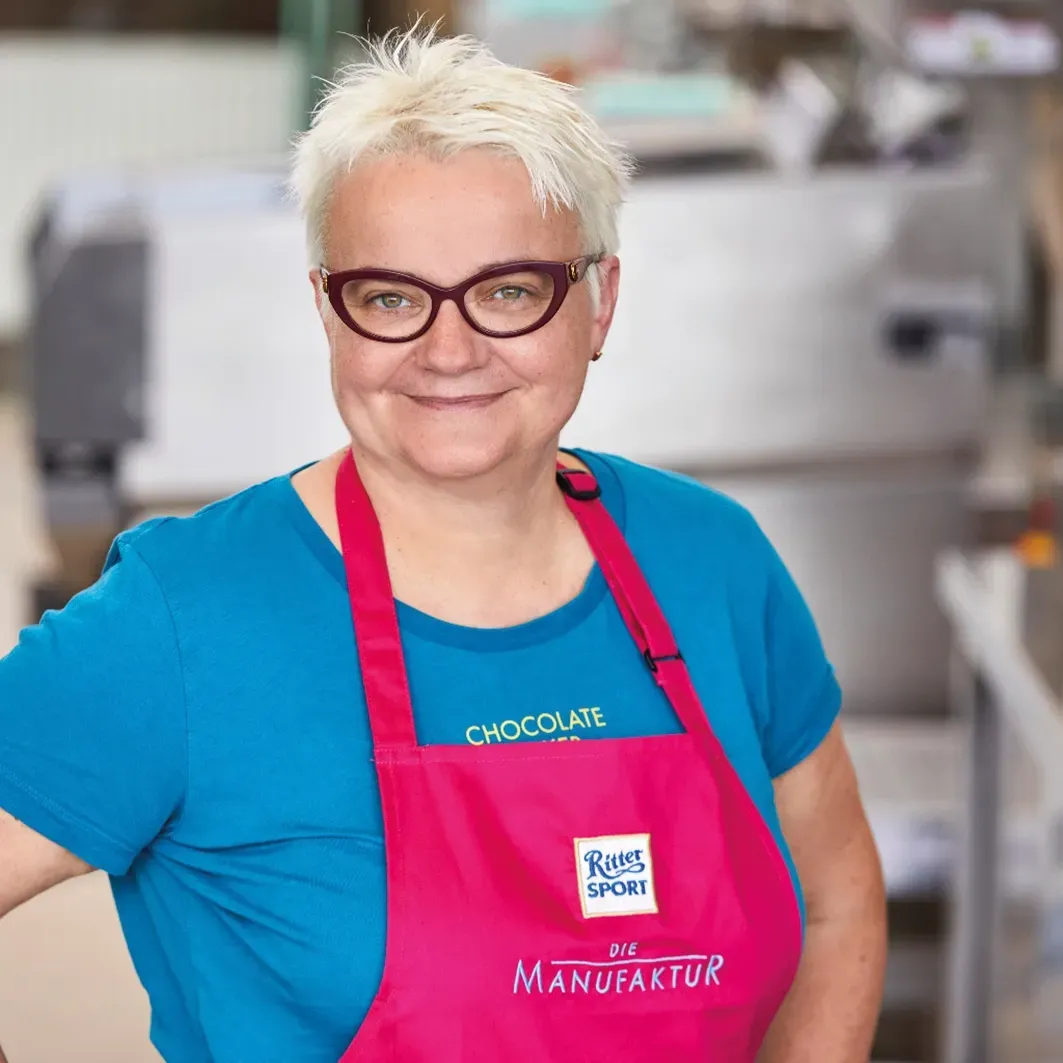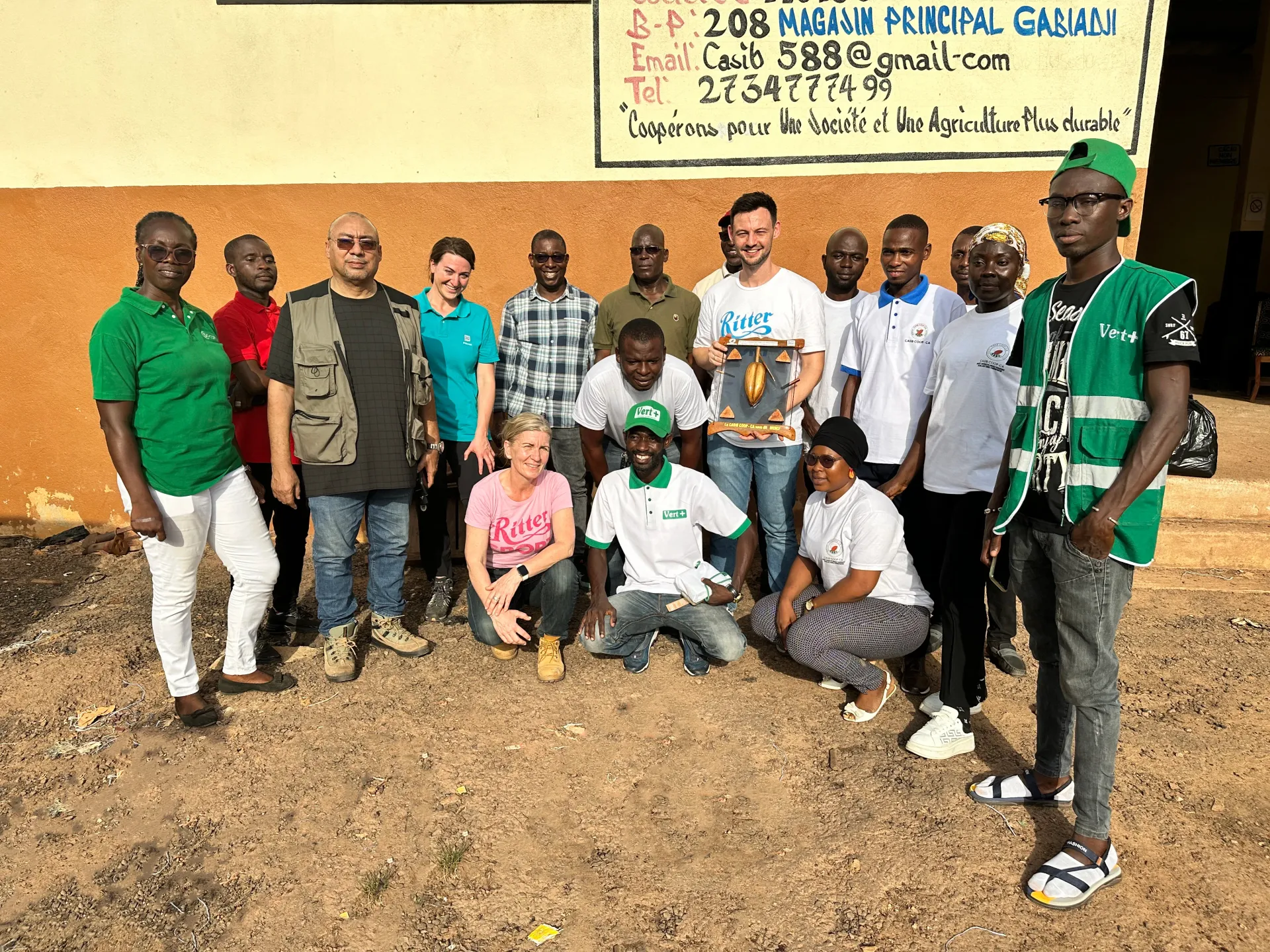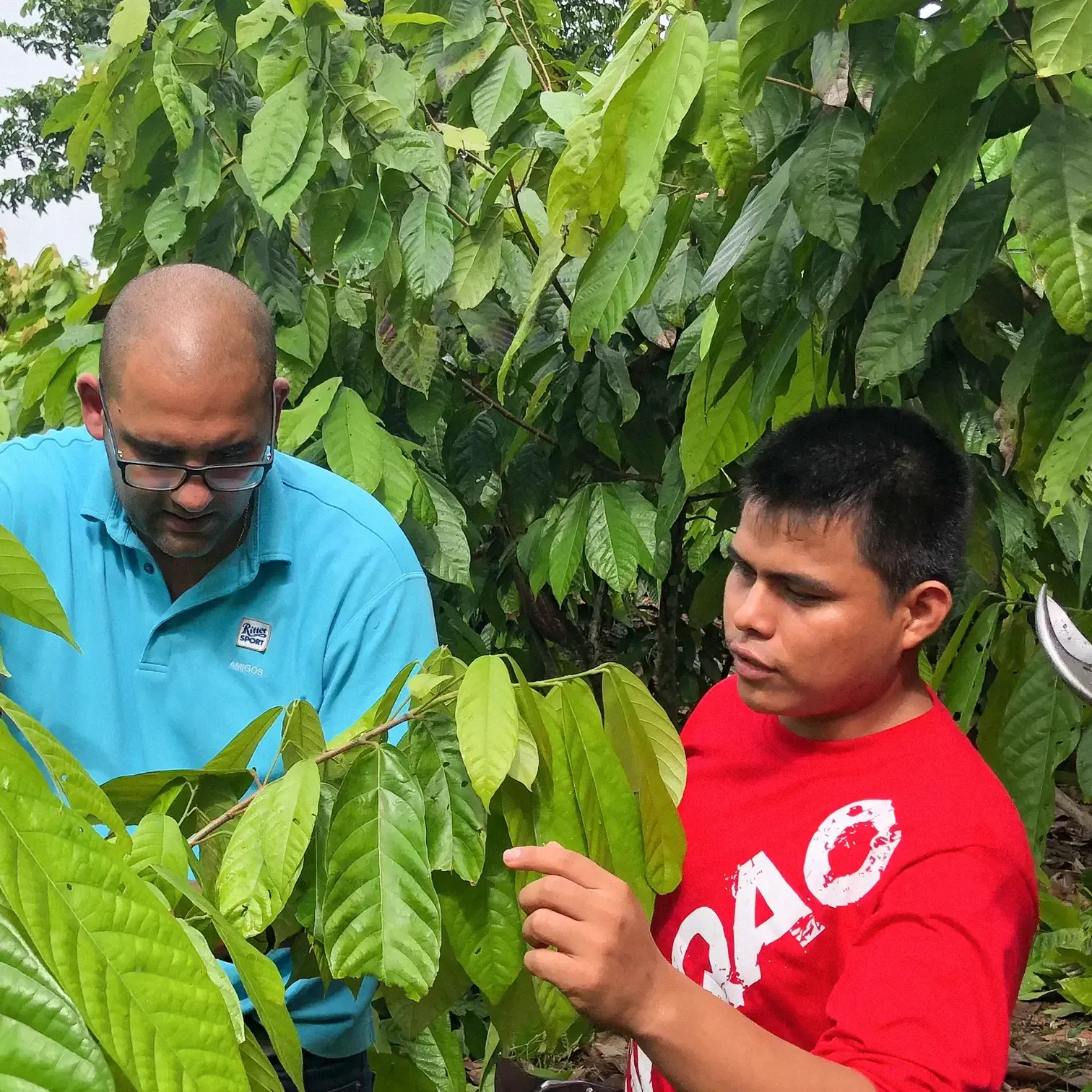OUR CHOCOLATE
OUR COCOA
COMPETENCE
OUR COCOA
COMPETENCE
Trust in our
COCOA EXPERTISE
We firmly believe that chocolate is not just a pleasure, but also a mission: doing the right thing to make really good chocolate. Our cocoa is the hero in our flavour experience. Behind our colourful packaging is not only cocoa expertise in cultivation, harvesting and processing, but also a whole lot of love and passion. The result: a unique moment of pleasure in every bite.
Our Cocoa
TEAM
LYDIA FRECH
OUR COCOA LADY
The sustainability manager, who not only has our raw materials under control, but also looks after our cocoa programmes around the world
with true passion.

FRANK GELTENBORT
OUR FAIR DEALER
He is responsible for procuring our most important ingredient: our cocoa. What sounds like a world of numbers has a lot to do with our special understanding of fair dealings with everyone involved in the value chain.

HAUKE WILL
THE LORD OF THE TREES
There are probably only a few chocolate manufacturers who have a “Head of Agricultural Production”. Very few have their own cocoa farm. We have both: El Cacao and Hauke Will.

UTA BOAS
THE GOURMET
No one describes the subtle differences between various types of cocoa as accurately as she does. Her expertise is in every bite.

From Flower to a
SQUARED-SHAPED DELIGHT
We firmly believe that chocolate is not just a pleasure, but also a mission: doing the right thing to make really good chocolate. Our cocoa is the hero in our flavour experience. Behind our colourful packaging is not only cocoa expertise in cultivation, harvesting and processing, but also a whole lot of love and passion. The result: a unique moment of pleasure in every bite.
Trust in our
COCOA EXPERTISE
Our Cocoa
TEAM
1
The magic of the
FLOWER
Embarking on a delicious journey:
Cocoa trees bloom for the first time between 18 months and three years of age. After fertilisation, it takes 5-6 months for ripe cocoa fruits to grow. A tree bears 20-30 fruits a year, in good years up to 50.
2
The perfect
HARVEST
Quality right from start:
When harvested, a cocoa fruit is 15-30 cm long and weighs 300-700g. Colours vary from green to yellow to a reddish violet. Experienced cocoa experts determine the perfect time to harvest and each fruit is picked carefully by hand.
3
Time to
FERMENT
The flavours develops: Fermentation creates the cocoa flavours. Sugar in the fruit pulp is broken down by yeasts, alcohol is produced, and pulp separates from the beans.
4
Drying the
BEANS
A decisive step: After fermentation, the cocoa beans are dried. Regular turning is important to ensure even and gentle drying. This process is crucial for the quality and shelf life of the cocoa beans.
5
Ready to
TRAVEL
Off to Europe:
The cocoa is carefully packaged and transported to the harbours, from where it starts its sea journey to Europe.
6
Things to get hot:
THE ROASTING PROCESS
After the cocoa beans have been carefully cleaned, they are roasted. The typical cocoa and roasted aroma and the dark brown colour of the beans develop at temperatures between 130 and 150 °C.
7
TRACKING THE KERNEL:
THE BASIS FOR EVERYTHING
After roasting, the cocoa beans are broken and their shells removed. Air currents separate the light shells from the heavier cocoa nibs. Then the nibs are ground.
8
The right mixture:
THE ART OF MAKING CHOCOLATE
Cocoa mass, cocoa butter, milk powder and sugar are mixed in a kneader and processed into a dry, delicious chocolate mass by rolling.
9
The finishing touches:
CONCHING & COOLING
The dry chocolate mass is conched, a refining process in which the mass is slowly stirred under heat. This is crucial for the flavour and can take several hours, depending on the type of chocolate. The liquid chocolate mass is then poured into the characteristic square-shaped Ritter Sport moulds.
10
For pleasure and joy:
OUR DIVERSE RANGE OF CHOCOLATE
Isn’t it fascinating how small cocoa beans are turned into an irresistible chocolate delight? With 10 unique chocolate masses, perfectly matched to their ingredients, Ritter Sport offers over 40 different flavours worldwide. Your favourite variety is sure to be among them!
[Sticky Row Identifier]
How much do you know
ABOUT COCOA
HOW MANY COCOA FRUITS DOES IT TAKE TO MAKE ONE BAR OF ALPINE MILK CHOCOLATE?
Approximately one whole cocoa fruit is needed to make one bar of Ritter Sport Alpine milk chocolate.
HOW MANY FRUITS DOES A COCOA TREE BEAR PER YEAR?
A cocoa tree bears around 20-30 fruits a year, in good years up to 50.
HOW BIG DOES A COCOA FRUIT GROW?
Cocoa fruits are around 15 to 30 centimetres long and weigh 300 to 700 grams. Colours vary from green to yellow to a reddish violet.
Want to know more about our
EFFORTS?
Want to know more about our
EFFORTS?
RITTER SPORT










